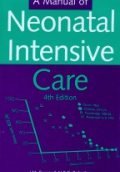Engineering Tools for Environmental Risk Management: 2. Environmental Toxicology
Katalin Gruiz,Tamas Meggyes,Eva Fenyvesi
ISBN: 9781138001558
Vydavatelství: Taylor & Francis
Rok vydání: 2015
Vazba: Hardback
Počet stran: 596
Původní cena: 2 605 Kč
Výstavní cena:
2 214 Kč(t.j. po slevě 15%)
(Cena je uvedena včetně 10% DPH)
Katalogová cena: 62.99 GBP
Nárok na
dopravu zdarma
Termín dodání na naši pobočku v Brně je přibližně 3-4 týdny.
Chemical substances, physical agents and built structures exhibit various types of hazard due to their inherent toxic, mutagenic, carcinogenic, reprotoxic and sensitizing character or damaging to the immune and hormone system. The first steps in managing an environment contaminated by chemical substances are characterization of hazards and quantification of their risks. Chemical models — using only analytical data — are still the most widely used applications for assessing potential adverse effects and the fate and behavior of chemicals in the environment. Chemical models rely on the assumption that the adverse effect is proportional to the concentration, which in most cases is incorrect. In this volume, other models such as biological and ecological or regression models are discussed in detail and compared. Environmental risk management has two subsections: risk assessment and risk reduction. Environmental risk, to a large extent, arises from the adverse effects of chemicals and contaminated land; that is why measuring and testing these effects plays a key role in risk management. “Environmental Toxicology” deals with direct measurement of adverse effects of pure chemicals or environmental samples. This book has therefore been created specifically for engineers and gives a general overview of environmental toxicology. It provides an overview of hundreds of standardized and nonstandardized, generic and site-specific, conventional and innovative, animal and alternative test methods, and demonstrates how to apply these results to the regulation and management of environmental risk. In addition to human, aquatic and terrestrial methods for measuring toxicity, new trends in environmental analytics and the integration and complementary use of chemical analyses and the testing of effects are described. Bioavailability and accessibility as key parameters are detailed and the interactive and dynamic characterization of contaminants in soil is introduced. Emphasis is placed on the evaluation and interpretation of environmental fate and adverse effect data as well as the simulation of environmental processes and effects in microcosms and mesocosms.

